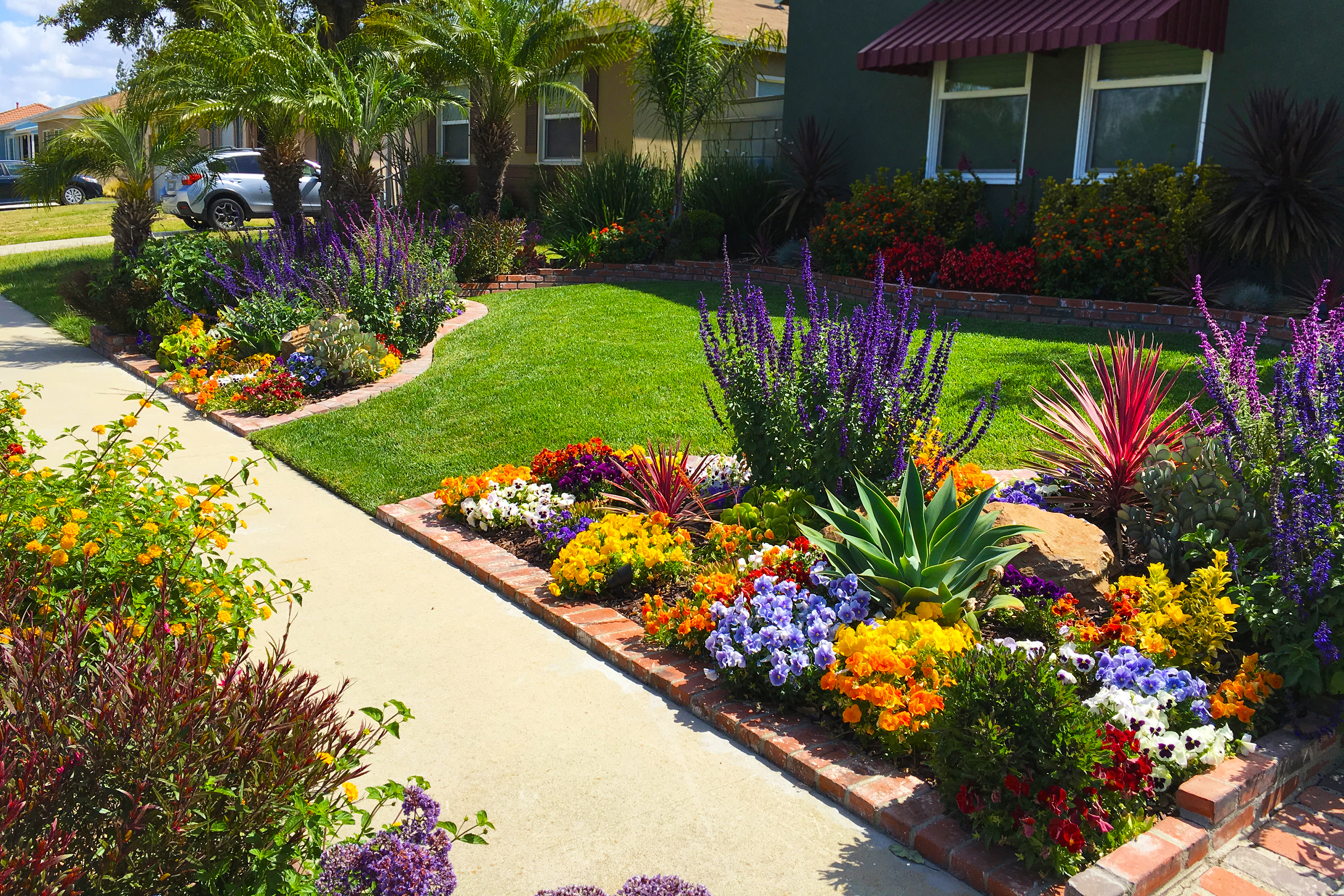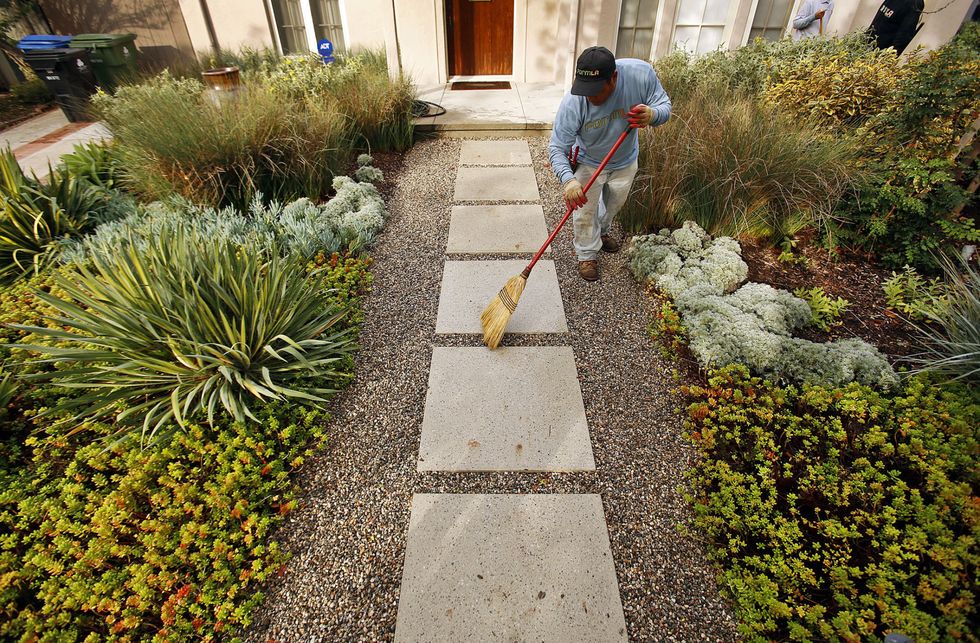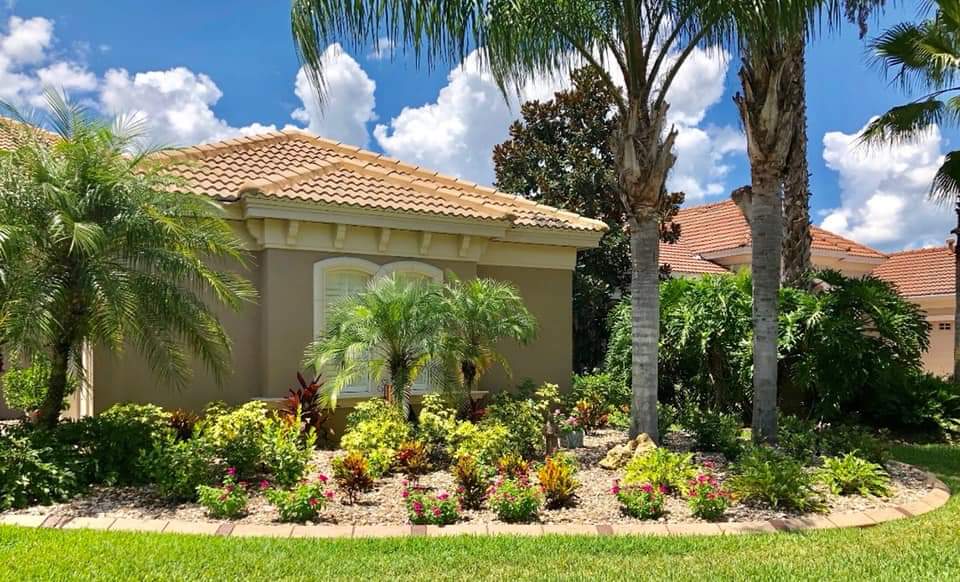Why Picking the Right Palm Desert Landscaping Service Issues
A Comprehensive Overview to Designing and Implementing Effective Landscape Design Solutions
The art and scientific research of landscape design expand beyond simple aesthetic appeals; they entail a thoughtful combination of design concepts, environmental stewardship, and useful application. What methods can one employ to make certain these landscapes not only flourish however also flourish in consistency with their environments?

Recognizing Landscape Design Concepts
One may question what fundamental components add to efficient landscape style. At its core, successful landscape design pivots on a number of essential concepts that guide the setup and selection of aspects within an area. These concepts consist of unity, rhythm, percentage, and balance, each offering to develop a harmonious outdoor environment.
Unity describes the natural partnership amongst different elements, ensuring that they interact cosmetically and functionally. Equilibrium can be attained through asymmetrical or symmetrical setups, enabling the landscape to really feel secure and welcoming. Percentage entails understanding the scale of aspects in connection with each other and the surrounding environment, promoting visual harmony and convenience.

Assessing Your Outdoor Area
Prior to carrying out the principles of landscape layout, a comprehensive assessment of your outside area is essential. This initial evaluation assists specify the extent of your landscaping job and makes sure that your design lines up with the unique features of your home. Begin by examining the dimensions of your room, taking precise measurements to understand the readily available location for various elements such as gardens, pathways, and patios.
Following, observe the existing attributes of your landscape, including topography, dirt quality, and drain patterns. These aspects substantially affect plant choice and positioning. In addition, examine the sunlight exposure throughout different areas throughout the day, as this will certainly influence the kinds of plants that grow in your garden.
Consider the microclimates produced by frameworks, trees, and various other obstacles, as they can impact temperature and dampness levels. Finally, bear in mind of any type of existing plants or hardscape elements that you desire to get rid of or maintain. This extensive evaluation prepares for a well-informed and efficient landscaping solution, ensuring that your style is not only cosmetically pleasing however likewise useful and lasting for several years ahead.
Sustainable Landscape Design Strategies
Incorporating sustainable landscape design strategies is vital for creating an ecologically responsible outdoor area. These techniques not just promote ecological equilibrium but likewise enhance the aesthetic and practical worth of a landscape. One foundational method is the utilization of native plants, which call for much less water and upkeep while supporting regional wild animals. Applying efficient irrigation systems, such as drip irrigation, lessens water waste and guarantees that plants receive appropriate dampness.

An additional effective method is the calculated positioning of trees and hedges to give natural windbreaks and shade, therefore decreasing power costs (Palm Desert Landscaping). Rain yards can recommended you read be incorporated right into the landscape design to handle stormwater overflow efficiently, filtering system contaminants prior to they enter waterways
Selecting the Right Plant Kingdoms
Picking the right plants for your landscape is essential to accomplishing both aesthetic charm and eco-friendly consistency. The procedure starts with an understanding of your neighborhood environment, dirt problems, and the specific microenvironments within your landscape. Evaluating aspects such as sunshine direct exposure, wetness degrees, and existing vegetations will certainly aid you pick plants that prosper in your special setup.
Consider including indigenous plants, as they are well-adapted to regional problems, need less maintenance, and support local wildlife. Additionally, picking a varied selection of species can enhance biodiversity while reducing the risk of disease and pest episodes. It is vital to evaluate the development behaviors, growing periods, and seasonal colors of possible plants to develop a dynamic and natural landscape.
In addition, believe regarding the intended use the room; for circumstances, if the area will certainly experience high foot website traffic, go with resilient ground covers. By attentively selecting plants that align with both your environmental needs and visual goals, you can create a lasting landscape that not only boosts your residential property however also adds positively to the bordering environment.

Execution and Maintenance Methods
As soon as the right plants have been picked for your landscape, the focus changes to efficient application and recurring maintenance techniques. Successful installment starts with proper site preparation, which consists of dirt screening to determine nutrient levels and pH, followed by changing the dirt as required. Meticulously arrange plants according to their growth practices and light demands, making certain ample spacing to promote healthy growth.
Irrigation is an important site here component of execution. Develop a watering timetable that takes into consideration the specific needs of each plant types, readjusting for seasonal modifications. Using drip irrigation systems can improve water performance and lower overflow.
Maintenance techniques have to be implemented to ensure the longevity and vigor of your landscape. Normal jobs consist of weeding, mulching, and trimming to manage growth and avoid condition. Fertilizing ought to be carried out based on dirt examinations, supplying the required nutrients without over-fertilizing.
Keeping an eye on for diseases and parasites is crucial; early discovery can protect against considerable damage. Lastly, seasonal changes to upkeep routines, such as winterizing perennials and preparing for springtime development, will make certain that your landscape stays healthy and aesthetically attractive year-round.
Final Thought
Effective execution and ongoing maintenance additionally make certain the longevity and vitality of landscapes. By integrating these aspects, landscapes can be transformed into lovely, useful environments that promote biodiversity and contribute positively to neighborhood wellness.
One may question what view it fundamental components add to reliable landscape style. At its core, effective landscape style pivots on a number of crucial concepts that lead the setup and option of elements within a room.Picking the right plants for your landscape is crucial to attaining both aesthetic appeal and environmental harmony. It is vital to examine the development routines, flowering periods, and seasonal colors of potential plants to develop a natural and vibrant landscape.
Once the right plants have been selected for your landscape, the emphasis shifts to efficient execution and continuous maintenance methods.